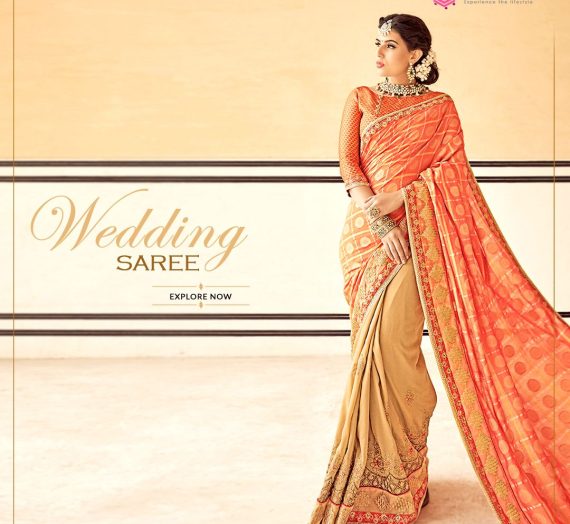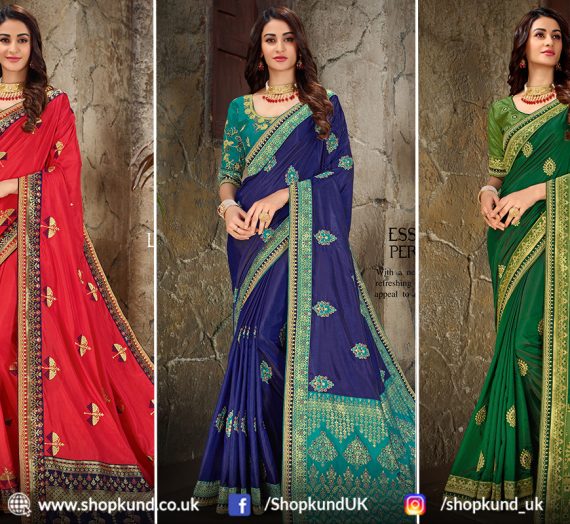Banarasi Sarees are a globally loved Indian outfit. In fact, no culture or country has been able to effectively replicate this Indian saree. The credit supremely goes to one very renowned wedding and celebrity fashion designer from Kolkata. It is said that Indian brides’ trousseau is incomplete without a banarasi, as it is a royal fabric, whose glorious history is rooted back to Rig Veda. Banarasi sarees are made out of pure gold and silver threads, which signify newness, purity, and serenity and that’s why it is considered the apt wedding attire for Indian Brides.
But you must know how to decide your banarasi saree for a wedding; like what should you consider while selecting an authentic Indian sari.
If you want to look flattering on your wedding day, here are a few tips for you to select the most exquisite banarasi wedding sarees:
- The Zari (gold thread work) should be dense. The saree should at least have 5600 threads to be tagged as genuine.
- Since banarasi sarees are made out of real silver and gold, the zari work will mostly be uneven. Although this sounds odd, if the saree zari is darker in places, it is an original piece. The darkening is the result of the oxidization of metal (silver) because of interaction with air.
- If you still aren’t sure of the purity of the banarasi fabric, you can take a piece out of the fabric and burn it. If the burning smells like plastic, then it is not pure silk. Since silk is made out of silkworms, the burning should smell like flesh burning. Crazy but true.
- There are different kinds of banarasi sarees, such as Jamdani, Tanchoi, Jangla, Meenakari, and Cutwork Kora. We have included a small brief about each type below:
- Cutwork Kora is a lightweight banarasi Indian sari, perfect for summer weddings. It will look wonderful on all body types.
- If you are looking for authentic, heavy gold zari work, then go for the Jangla Saree. They come with tiny zari detailing.
- The Tanchoi and Jamdani are the most common choices for wedding sarees where the former leads the way with few brownie points. They both have gold zari as bases. However, Jamdani zari is woven on tissue cotton, while Tanchoi is woven in pure silk. Both look royal, with big bootis and motifs.
- Finally, the Meenakari sarees are considered as the modern-day bridal collection as they come in different colors, shades, and types.
If it is for a bride, choose a heavy banarasi saree. The lighter ones usually have flashy and shinier work while the heavily zari’ed sarees provide an antique hue.




